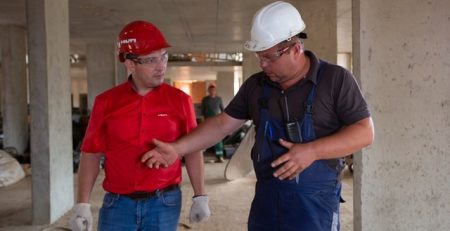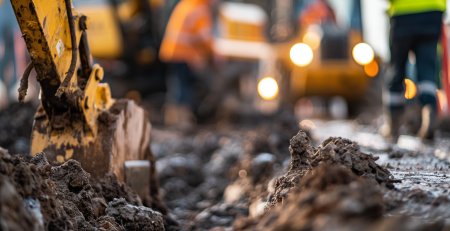Why Community Engagement Is Vital For Contractors
Whether we like it or not, and whether or not we choose to address it, contractors have a direct impact on local communities. From small-scale housing projects to large-scale commercial developments, when contractors and construction firms engage in a project in a public space, they’re entering into a dialogue with the people who live, work, and play there.
This presents more than just a series of ‘hurdles’ that need to be overcome though – this direct relationship with local communities can present something of an opportunity. From building a positive reputation to securing future work, positive community engagement should be a priority for contractors. Here’s why…
What impact does construction have?
When a construction site goes up, it has an inherent impact on the local area, which in turn then affects local residents and people who frequent the area. This can broadly be broken down into four key areas of impact:
- Visual
To a contractor, a construction site is often an interesting, even exciting thing to behold. Developers, architects, and construction workers see sites as symbols of opportunity, and potential – but this isn’t always true of the general public. To the average passerby, a construction site represents a temporary, often ugly, blight on a local environment.
Most people might know that it may be there for good reason, but that doesn’t mean they don’t see it as a bit of an eyesore. Sites can obscure local areas of aesthetic appeal, such as green areas and iconic buildings or structures.
- Auditory
Anyone working in the industry will be perhaps uncomfortably familiar to the noise pollution caused by construction sites. Machinery operation, workmen calling out to one another, and manual labour all causes a cacophony of sound, which can be extremely disruptive to residents and professionals in the area. There are, of course, limitations and regulations in place to ensure this never becomes unreasonable, but construction noise, even within these guidelines, can be a significant imposition.
- Logistical
Sites can also create a practical barrier to access for members of the public – not with regard to access for the disabled etc (which needs to be accounted for in site design), but in broader terms such as ease of access to preferred pedestrian or motor routes. In other words, large sites can simply get in the way!
- Psychological
One of the other big impacts a site can have is building a sense of hostility and frustration among a community. Usually, this arises as a result of a combination of one or more of the above points, along with a lack of awareness or information about the details and duration of a project. If a site gets in the way, makes a loud noise, spoils the look of a beautiful town and local people have no idea how long it’s going to be there, or what it’s for, animosity to the companies involved can grow.
Why do these things matter?
The challenge, particularly from an internal industry perspective, lies in evaluating why the impact of construction is worth considering above and beyond the requirements already in place when it comes to site design. It’s easy to argue that, as these things are only temporary, public inconvenience is just something we have to accept, and move on from.
However, in taking steps to recognise that these problems exist – by pre-empting them, or acknowledging them in ways other than those that are mandatory – it’s possible for contractors and construction businesses to foster extremely positive relationships with the local community. This includes local councils, leading businesses and organisations, and the wider public.
This can make a number of important differences to the process of organising and completing a project. Letting people know what to expect can reduce the number of complaints. Engaging in productive, ongoing dialogue with local authorities can also lead to a more positive reputation, which in turn can even lead to more work. All in all, taking the time to recognise and address the impact a site will have can go a long way for a business.
How to engage with local communities
So how can a contractor demonstrate active consideration and concern for the issues listed above? There are a few ways to go about this, in both a passive and active manner, that can make a big difference. These will naturally depend on the specific context of each project, but a few good ideas include:
Using hoarding graphics to create a dialogue
The vast majority of sites will need to include hoardings to protect the public from the on-going work, and these act as the perfect blank canvas for things like large format advertising – but by ordering graphics for your hoardings also present a fantastic opportunity to engage with a local community.
By using these installations essentially as billboards, it’s possible to achieve a number of things. This can include informing the public about the project taking place, which can serve to answer questions, and serve to give people a sense of the project being ‘worth it’. When it comes to aesthetic disruption, hoardings can also be a highly effective way of dressing a site and making an effort to ensure it doesn’t affect the visual harmony of the local environment in which it is situated.
Hold talks with local communities
While passive media like hoardings are a great way of letting people know about the project in a comprehensive and time-efficient way, they’re arguably a step removed from the actual communities at whom they’re targeted. An even more effective method of engagement is also the oldest form of communication in the world – simply talking to people.
This can take many forms, but an effective and fairly straightforward platform is to offer a public ‘forum’ about the project. Often, local authorities will embrace this if there is likely to be disruption, and members of the local community can be invited to have their questions and concerns addressed in person.
This is a fantastic, practical way of reassuring the public while simultaneously demonstrating that you’re a considerate, empathetic business. It’s also likely to appeal to local authorities, chambers of commerce and so on, which can be very beneficial when tendering for contracts in the future.
Use digital channels to stay in contact
For many people, one of the frustrations about the construction sites is the fact there isn’t usually anyone available to hear their concerns – or certainly not in a clear and accessible way. In a world where instant communication is easier than ever before, this can come across as a deliberately obtuse process, designed to stop people ‘moaning’.
One hugely positive way to deal with this is to organise and manage an active social media account (or other digital presence) for the duration of your campaign. This will involve some time and effort, but it’s very straightforward to create a Twitter or Facebook page for the project and direct people to it if they have anything they’d like to discuss.
On top of this, do your best to respond quickly and considerately. If people want to know at which times of day they can expect noise, it’s very easy to let them know in a polite and apologetic manner. It demonstrates you’re willing to go the extra mile, and that you care about a local community’s right to information and communication.
Conclusion
A construction project is often a positive thing – working towards expanding services, creating new homes, or repairing damage. The problem is that there are times when either the project itself, or the process of construction, causes problems in a local community.
The contractors who develop good reputations are the ones who make an effort to address this in some practical way – even if it’s simply letting people know and apologising for the inconvenience sincerely and in advance. By adopting practices like these, contractors and construction companies can build fantastic public relations, and become a valued part of a local community.












